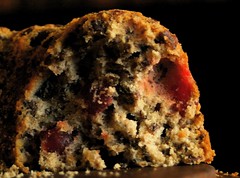The other day, I came across this fascinating Food Waste Factbook from Morrisonswhile researching British supermarkets’ response to food waste for my book.
After reading through the handbook, I was impressed by the retail chain’s commitment to reducing waste in their stores. Heck, just putting out a 15-page document would put them atop the heap amongst American grocers. They even have an entire section of their site devoted to helping shoppers reduce their own waste called Tastes Great, Less Filling Great Taste, Less Waste.
In the handbook, Morrisons talks about reducing prices on items near their “best before” dates and using some of these in staff meals. And since they process and pack their own produce, they’re able to package potato “off-grades” and sell them at a discount.
 Yet, I found one little anecdote (on page 8 of the PDF) intriguing, yet dubious. In the section about produce, Morrisons wrote:
Yet, I found one little anecdote (on page 8 of the PDF) intriguing, yet dubious. In the section about produce, Morrisons wrote:
We trim off the leaves from our cauliflowers–although we let our customers help themselves to the leaves to take home for their pet rabbits, free of charge.
After getting over that plural thing, I couldn’t help but wonder: Has anyone EVER taken them up on this offer? And what would the employees say if you tried to?Â
Here’s where the mission (from the title)Â comes in:Â Does anyone in the UK–rabbit owning or not–want to test this out? If so, I’d be grateful, as would at least one or two readers.
 In the Carolinas, where I live, the enjoyment of these black-eyed peas tends to come via the traditional New Year’s dish of
In the Carolinas, where I live, the enjoyment of these black-eyed peas tends to come via the traditional New Year’s dish of  The last item of 2009 comes from our friends atÂ
The last item of 2009 comes from our friends at 